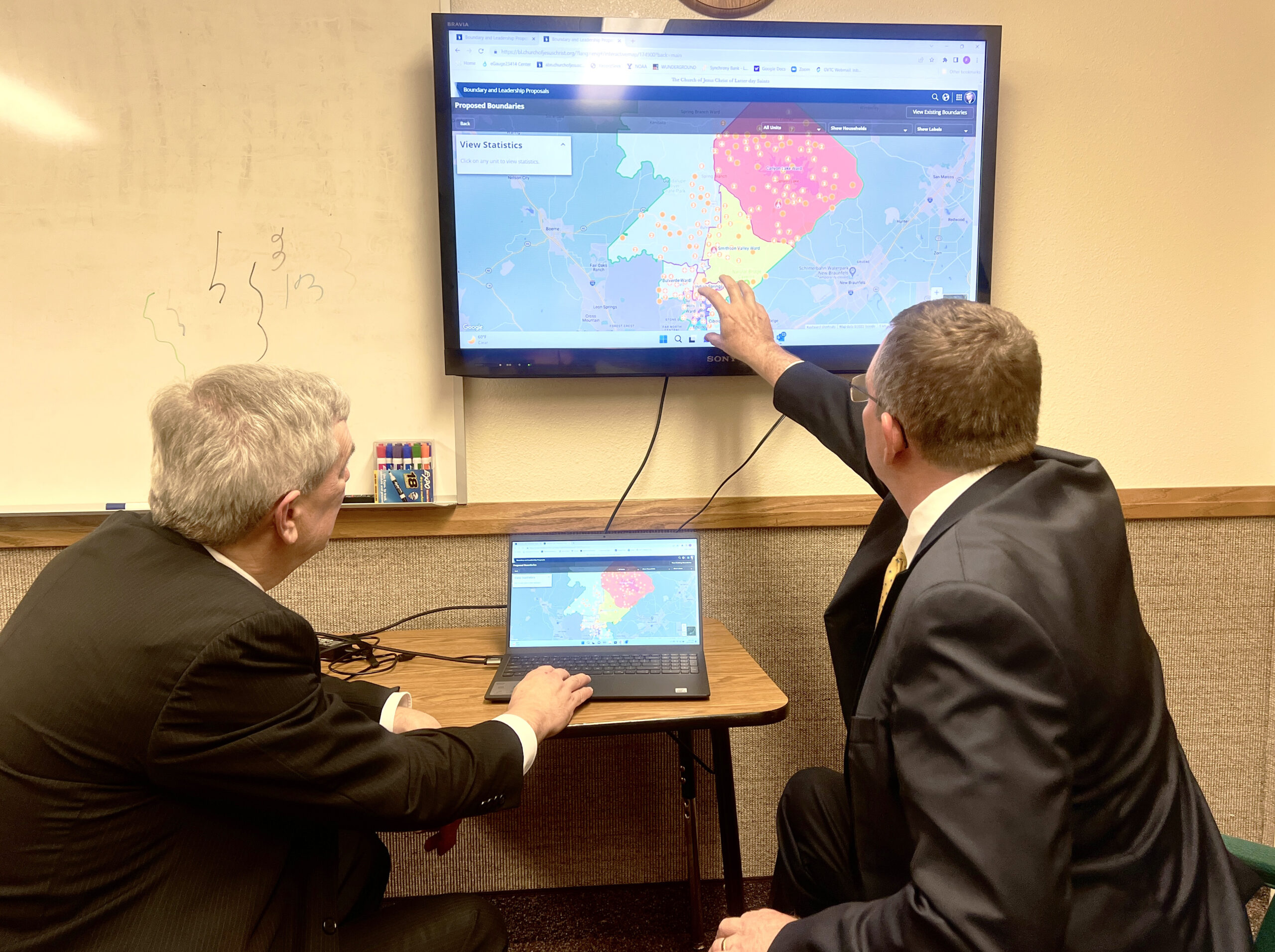By Ken Jarvis, Area Media Specialist
A few weeks ago I was having lunch with some members of another faith. I mentioned that some of our congregations were being divided. One person looked alarmed and said that in her faith group when a congregation is divided that’s a bad thing. I quickly assured her we remained united in the faith, but that we were dividing some large congregations into several smaller ones.
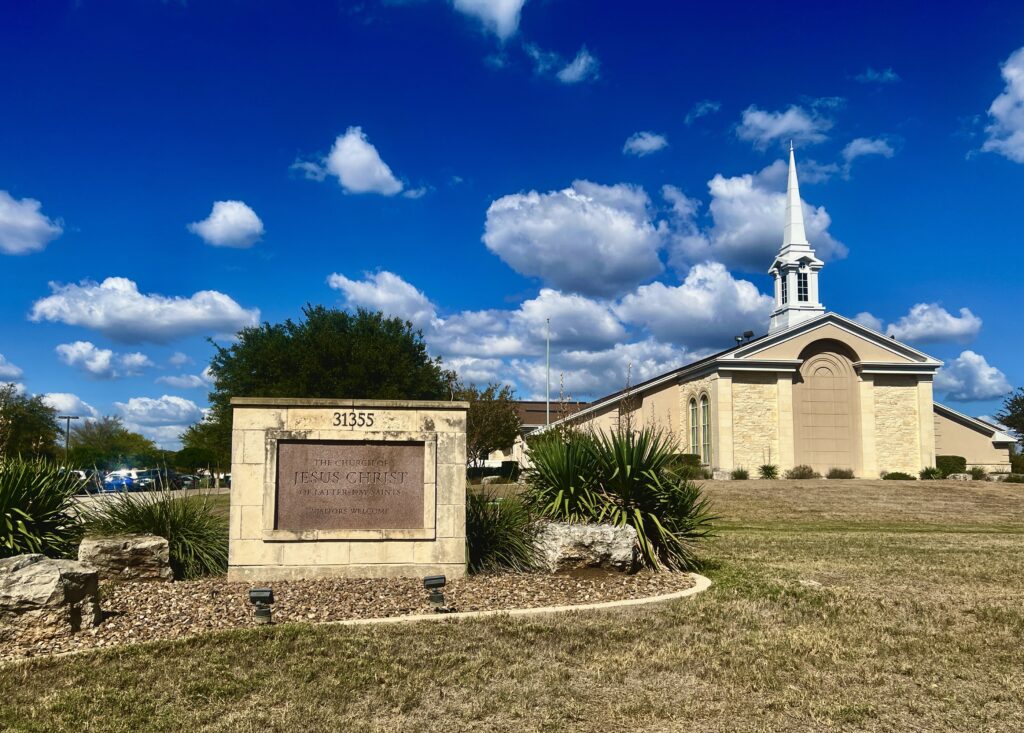
As members of the Church of Jesus Christ of Latter-day Saints have you ever lived in the same home, but over time, lived in several different wards (congregations)? Have you ever wondered how large is too large for a ward? When your ward was divided have you ever wondered how they decided who went where?

Last September some of the units[1] in the Texas Hill Country Stake of the Church of Jesus Christ of Latter-day Saints went through a realignment. Some unit boundary lines were changed and a new unit was created. Stake President Gary Long shared with us just what prompted the realignment and how it was accomplished.
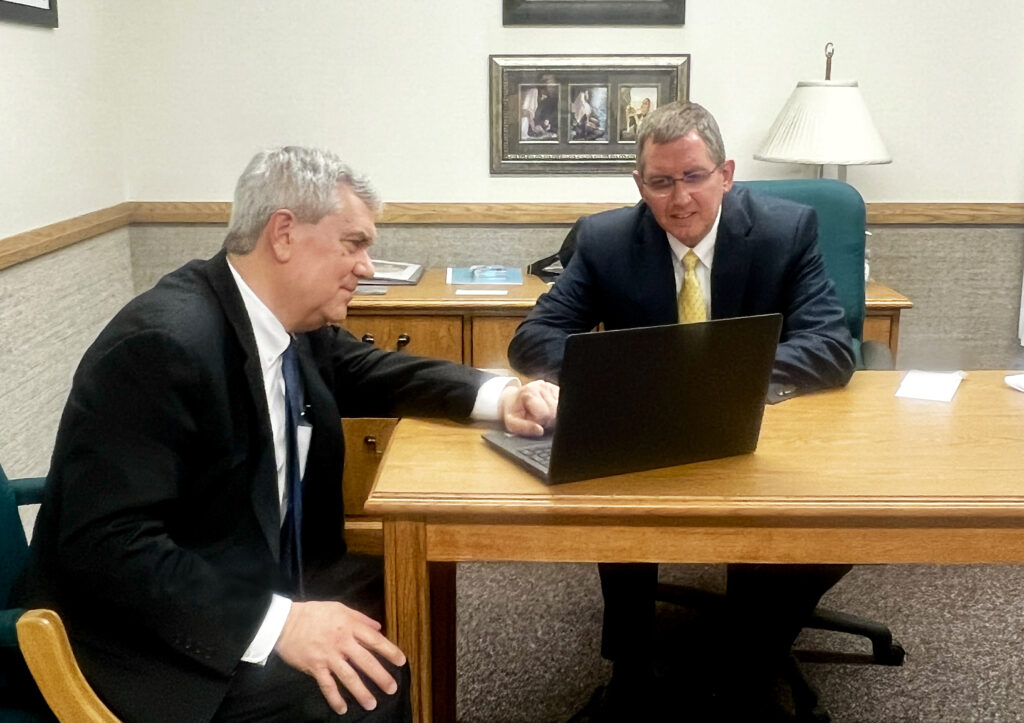
He began by explaining how growth is managed. “When we get larger we grow by division.” But what is the right size for a unit? “The Church has guidelines for this. If we look in Section 36 of the General Handbook it tells us that the minimum number of members for a ward in the US and Canada is 300. In other parts of the world the number is 150.” Wards in the Hill Country Stake have a membership of somewhere between 320 and 420 with an average of 370.

So what made this Stake Presidency decide the time was right to make changes? “Really it was just the growth in the area,” President Long replied. “We saw Smithson Valley ward growing. That ward was created five years ago. So in those five years it grew from just over 300 members when it was created to just over 625 in just five years with attendance at well over 300.

“We were seeing similar trends in Canyon Lake. 20 years ago Canyon Lake was a just a branch and a small struggling one at that. But the growth out there has just exploded. They were close to 550 in membership and over 250 attending Sacrament meeting.”
President Long added that their building is not very big and with COVID they were trying to spread out and they simply ran out of room. “When a building starts getting that much use, people don’t want to come if they can’t find a seat or they feel like they can’t see or hear.”
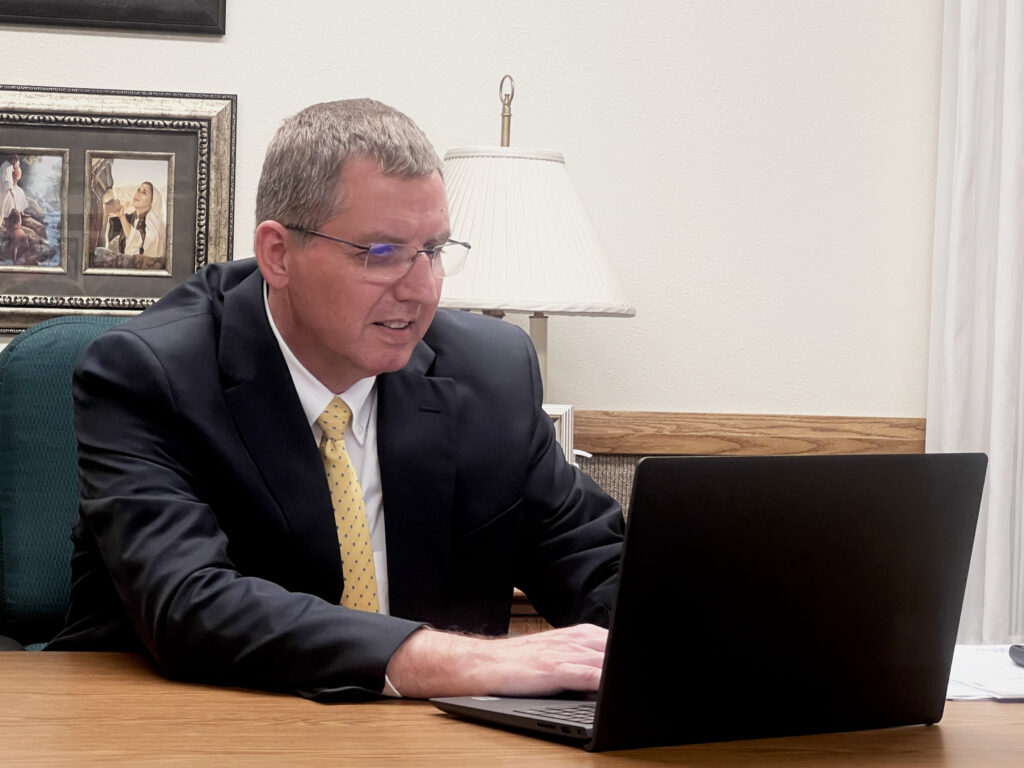
“So those units were the two main drivers,” said President Long. At that point he assigned his Second Counselor, President Frank Freeman, to begin the preliminary work on the realignment nearly a year before it took place. After six months the full presidency got involved.

Their thinking up until that point had been fairly global; total member numbers currently in units. But when they began the task of dividing, the challenge was how do you decide on the exact boundary lines? It comes down to which streets should go in which ward.

“So we started out by simply drawing boundaries,” President Long said. “We had some different looking boundaries at first. Then we got thinking about the youth and the different high school districts. We knew these changes would have a profound impact on the youth. It happened to me when I was a youth. They took our ward and divided us. It was hard! So, yes, that was key.”
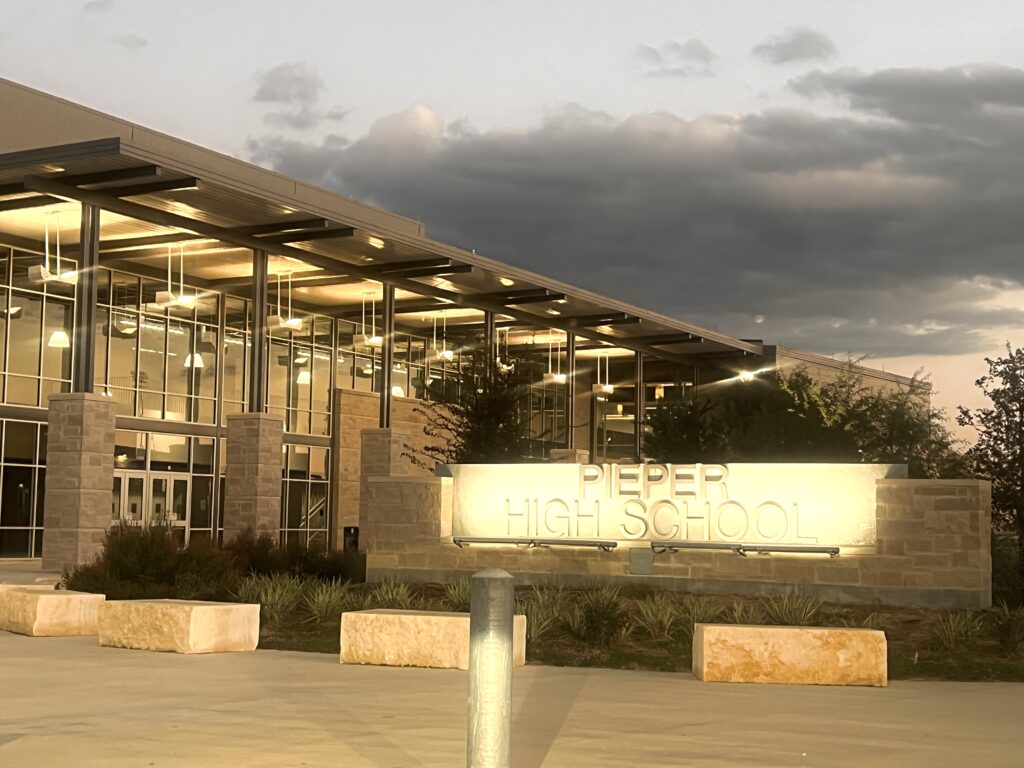
They then tried to align unit boundaries with high school boundaries in order for the youth to go to school and church with the same friends. The creation of the new Piper High School came at the same time. “We have Bulverde Ward and Indian Springs Ward that’s going to be all Piper High School,” President Long said. “The Spring Branch Ward will all be Smithson Valley or Blanco school districts. Smithson Valley Ward is all Smithson Valley High School.”

The Stake Presidency also tried to keep subdivisions together and find logical boundaries that make sense. “Of course we also looked at the buildings that we have. Who’s going to attend what building? How far is the drive to the new building?”
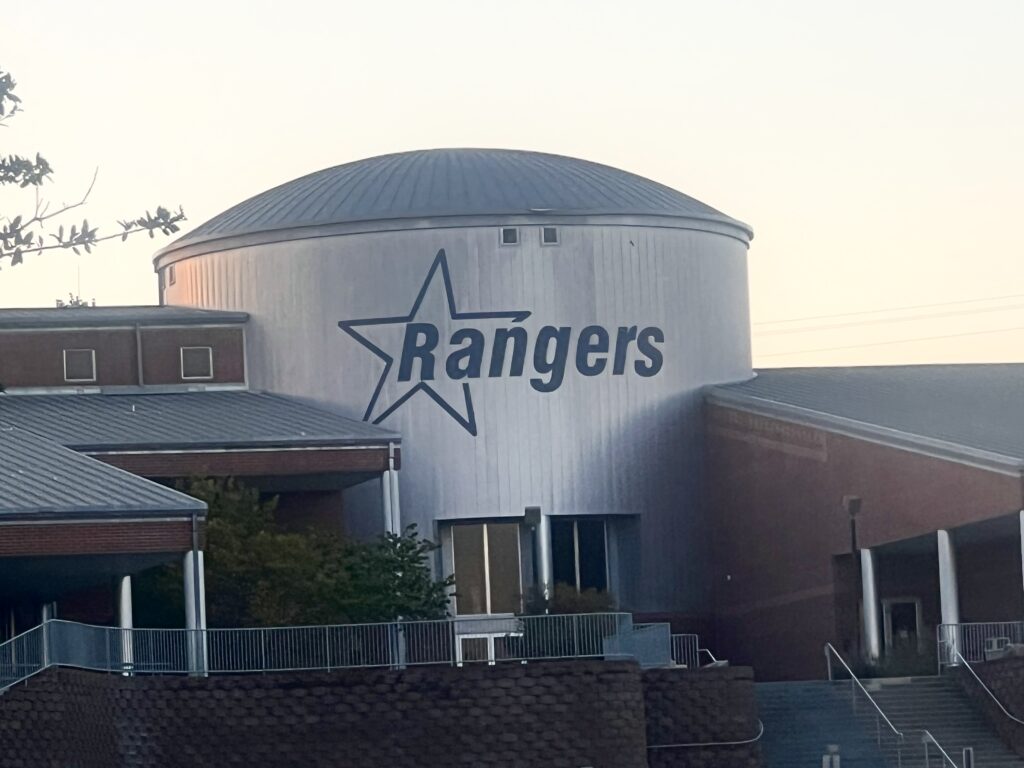
President Long reflected that, “Anytime you draw a line somebody’s not going to be happy. That weighed heavily on us as we considered doing this. So we spent a lot of time doing what Doctrine and Covenants section 9 says and that’s studying it out in our mind and going through different scenarios.”
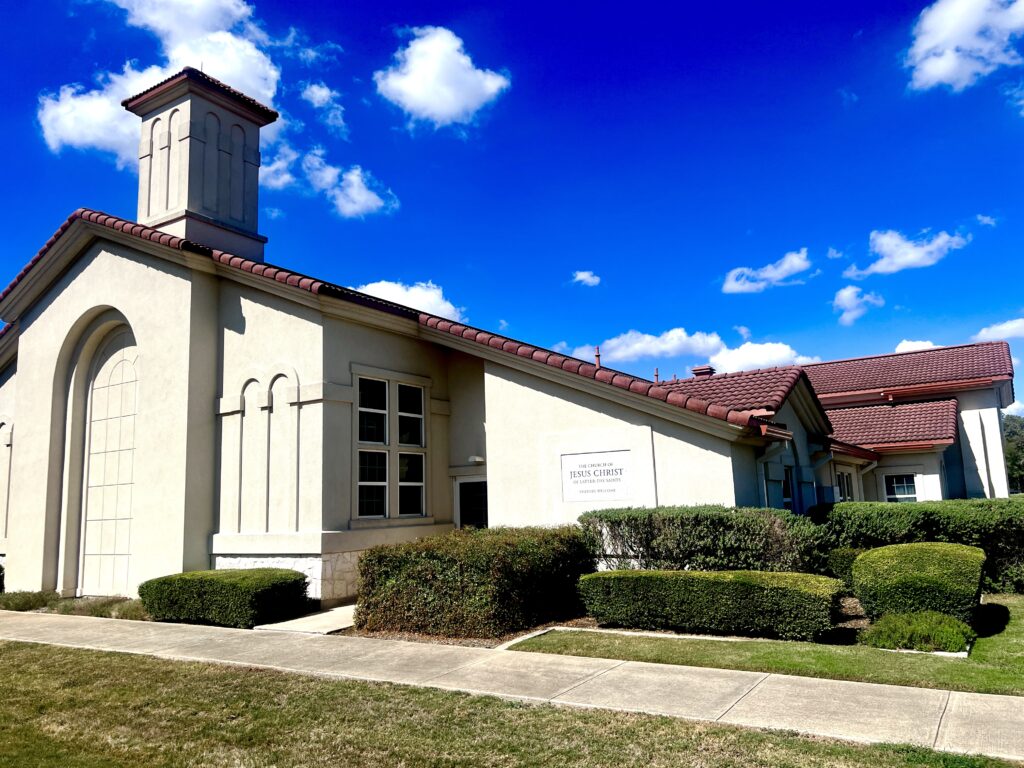
As they came close to the end of the decision making process the Stake Presidency realized they needed some additional input. “We recognized that we aren’t as close to the members as the bishops are so we counseled with them.” As an example President Long said there was a group of families that just a couple of years ago were moved from one ward to another. “And now we would be asking them to move again.” Consulting with the bishops helped the Stake Presidency make a more informed decision.

The Church has a tool that helps stake leaders plan by letting them move boundaries electronically to show which families would be impacted and the potential leaders who would be available. “We had to submit names for bishops at the same time as we presented the boundaries,” President Long added. “It’s all one proposal. And the tool is smart enough to recognize that.
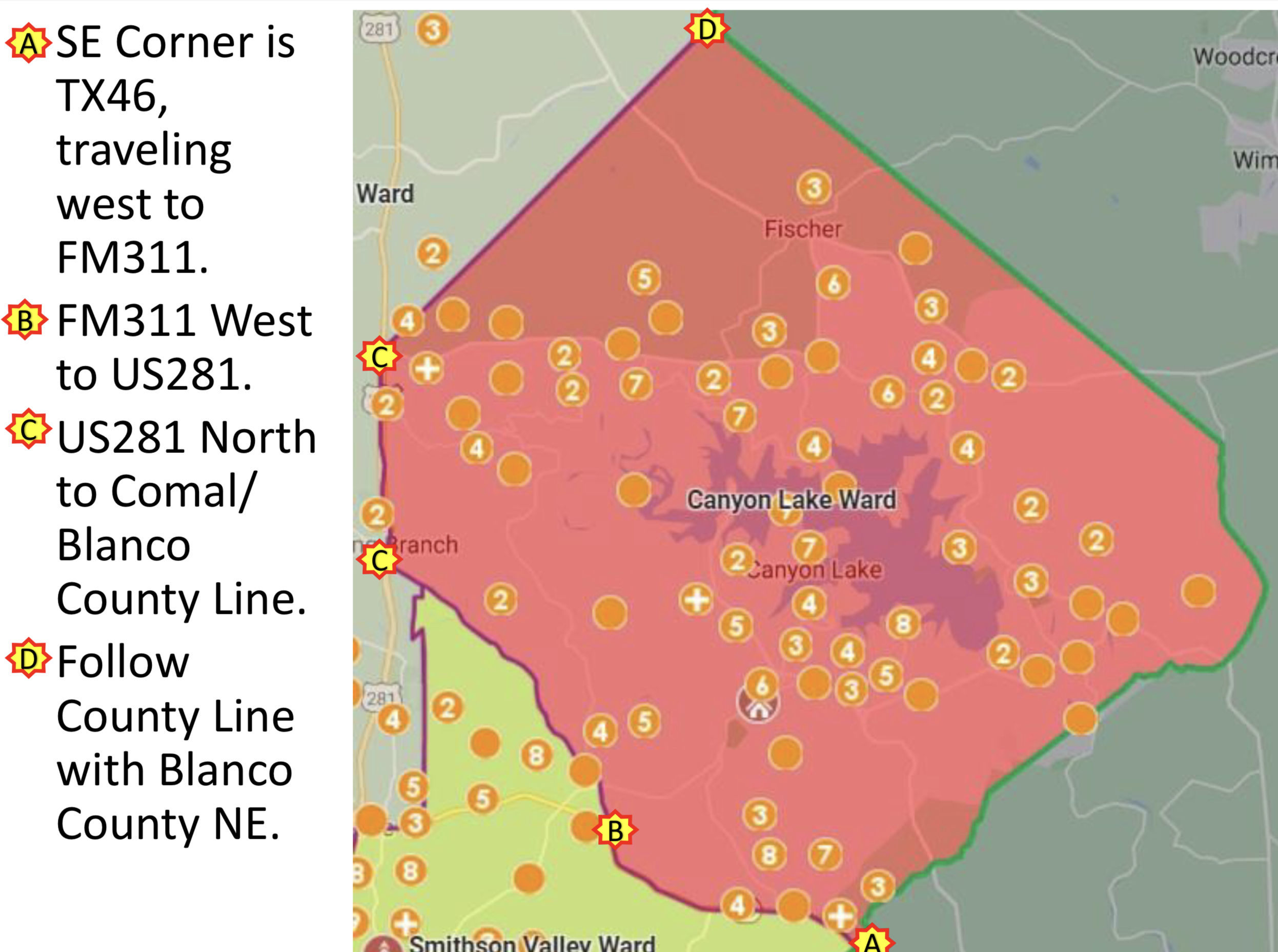

He explained that another thing they take into consideration is the number of full tithe paying Melchizedek Priesthood holders living in a unit. “They want to have a certain ratio of that. And the bare minimum ratio is 20 members to every full tithe paying Melchizedek Priesthood holder. So for a ward of 300 that would be 60.”
The Stake Presidency put it all together and pondered and prayed about the boundaries. “Once we felt good about the boundaries we pondered and prayed about the bishops. All of that work involved frequent trips to the Temple. Then as a presidency when we all felt good about it, we submitted it to Church Headquarters.”
The Handbook explains that it takes about four weeks to get approval from the Church. First it goes to an analyst at Church Headquarters who looks at boundaries and checks to see if all the minimum criteria were met. It finally ends up at the First Presidency’s office and they have to approve both the boundary changes and any bishops that are called.
When the Hill Country Stake Presidency heard back they got three different letters from the First Presidency. One, approving the boundary changes and authorizing them to present it to the members for their sustaining vote. Then they received two letters, one for each of the two new bishops.
So now we know how member growth is managed in the Church of Jesus Christ of Latter-day Saints. But there’s one question that still needs to be asked. Why do we go through all this work just so we can have so many relatively small units when one or two huge congregations in one very large building would be more cost-effective?
President Long answered this by reminding us that, “When the Savior ministered to people He did it one on one. Yes, there were a few large crowds where He fed the 5,000 with the loaves and fishes. But much of His ministry was done one on one.”
He then related it to our day, “What I’ve observed over the years is that when units get too large there’s not an opportunity to know everybody and to be able to serve side by side. We always want people to have opportunities to serve others. When units get too large people don’t feel they’re part of the unit and that they’re needed.” He made it clear that “…certainly we need everybody.”
[1] In the Church of Jesus Christ of Latter-day Saints “unit” refers to either a large congregation (ward) or a very small congregation (branch).
